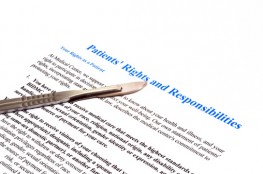Sen. Boxer Issues Report on Common Medical Errors, Prevention Strategies
21July2014
21July2014

Sen. Barbara Boxer (D-Calif.) recently released an updated report on medical errors at U.S. hospitals and strategies California hospitals are using to help prevent patient harm.
The report states that medical errors cause the deaths of between 210,000 and 440,000 Americans per year—a number that Boxer describes as being equivalent to a jumbo jet crashing every day with no survivors.
The numbers cited are from a 2013 study published in the Journal of Patient Safety. Previous estimates put the number of preventable hospital patient deaths at 98,000, as cited in a prominent 1999 study.
“Many people will be shocked to hear this, but medical errors are one of the leading causes of death in America today,” Boxer said during a recent visit to the University of California, San Francisco (USCF) Medical Center, according to a press release from her office. “These deaths are all the more heartbreaking for families because they are preventable.”
Boxer’s report was motivated by a visit with a family who lost a child due to a medical error. After the visit, Boxer realized there was no single list of common medical errors, so she wrote to federal officials requesting the development of a single, unified list.
The Partnership for Patients, using funds from the Affordable Care Act, released a list of the nine most common medical errors in July 2013. In February 2014, Boxer wrote to nearly 300 California hospitals asking them to describe their efforts to reduce the nine most common medical errors. The new report is based on those hospitals’ responses.
- Adverse drug events
- Catheter-associated urinary tract infections
- Central line-associated blood stream infections
- Injuries from falls and immobility
- Obstetrical adverse events (birth injuries)
- Pressure ulcers (bedsores)
- Surgical site infections
- Venous thromboembolism (blood clots)
- Ventilator-associated pneumonia
During her UCSF statement, Boxer emphasized the opportunity – and the challenge – presented by the high number of medical errors at American hospitals. She also stressed the fact that there is no single solution to the problem, and that efforts from multiple parties are required.
“If we all work together – doctors, nurses, hospital administrators, patients, patient advocates, medical technology pioneers, public health experts and federal officials – we can prevent so much heartbreak for families and stop these tragedies before they occur,” she said.
Once tragedies have occurred, however, the only recourse for affected families is often a medical malpractice lawsuit. The attorneys of Morrow Kidman Tinker Macey-Cushman, PLLC represent patients who have been harmed by preventable medical errors in Seattle and across Washington.